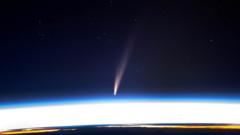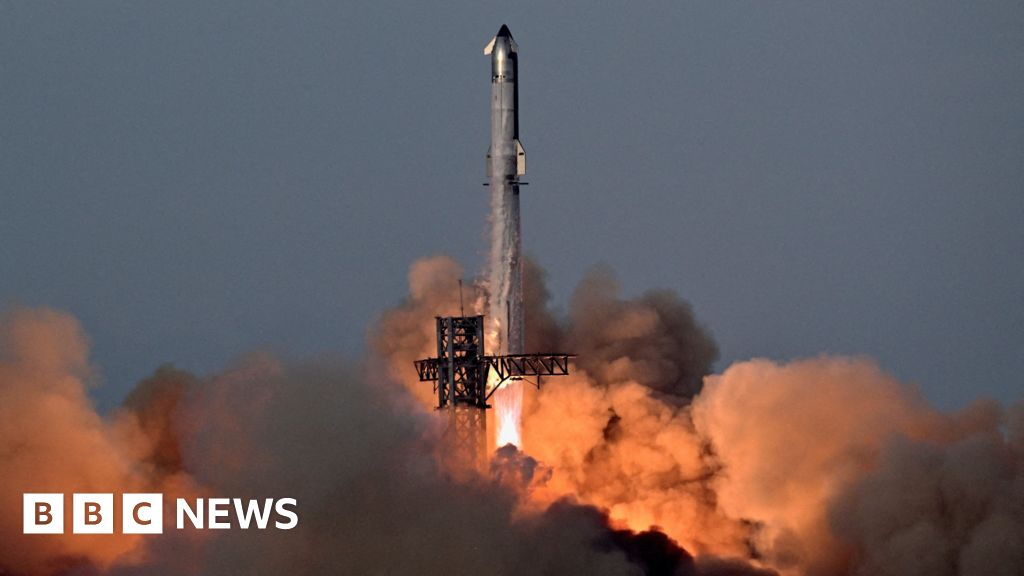In a stunning astronomical event, Comet C/2024 G3 (Atlas) is making its first appearance in 160,000 years, and may soon be visible to eager stargazers around the globe. NASA has indicated that predicting the brightness of such comets is notoriously challenging, but there's potential for this comet to shine brightly enough to see with the naked eye.
The comet reached perihelion — its closest point to the Sun — on Monday, a crucial factor for observers as this phase directly influences its brightness. According to experts, views may start becoming viable from Monday evening. Though specifics on visibility locations are not yet confirmed, it is anticipated that the southern hemisphere will provide the best vantage points, as the comet could glow as brightly as Venus.
Discovered last year by NASA's Asteroid Terrestrial-impact Last Alert System, Comet C/2024 G3 has piqued the interest of astronomers. Dr. Shyam Balaji from King's College London noted that existing orbital calculations predict the comet's closest approach to the Sun will take it roughly 8.3 million miles away, qualifying it as a "sun-skirting" comet.
Balaji emphasized that the best viewing times will fall around the perihelion, subject to variable local weather conditions and the comet's unpredictable nature. He advised southern observers to look toward the eastern horizon before sunrise and switch to the western horizon after sunset to catch glimpses of this extraordinary phenomenon.
For potential observers in the northern hemisphere, like the UK, visibility might pose a challenge due to the comet's position relative to the Sun. Checking local weather conditions will be essential for assessing possible sightings.
To enhance viewing experiences, Balaji recommends seeking locations with minimal light pollution and using binoculars or small telescopes. He cautioned stargazers to be particularly observant around dawn and dusk when the comet is expected to become visible.
Meanwhile, excitement buzzed across social media as NASA astronaut Don Pettit captured and shared an image of the comet from the International Space Station, calling it "totally amazing." With this rare cosmic visitor, those ready to gaze at the night sky may soon be awed by the breathtaking sight of a comet that won't be seen again for 160,000 years.
The comet reached perihelion — its closest point to the Sun — on Monday, a crucial factor for observers as this phase directly influences its brightness. According to experts, views may start becoming viable from Monday evening. Though specifics on visibility locations are not yet confirmed, it is anticipated that the southern hemisphere will provide the best vantage points, as the comet could glow as brightly as Venus.
Discovered last year by NASA's Asteroid Terrestrial-impact Last Alert System, Comet C/2024 G3 has piqued the interest of astronomers. Dr. Shyam Balaji from King's College London noted that existing orbital calculations predict the comet's closest approach to the Sun will take it roughly 8.3 million miles away, qualifying it as a "sun-skirting" comet.
Balaji emphasized that the best viewing times will fall around the perihelion, subject to variable local weather conditions and the comet's unpredictable nature. He advised southern observers to look toward the eastern horizon before sunrise and switch to the western horizon after sunset to catch glimpses of this extraordinary phenomenon.
For potential observers in the northern hemisphere, like the UK, visibility might pose a challenge due to the comet's position relative to the Sun. Checking local weather conditions will be essential for assessing possible sightings.
To enhance viewing experiences, Balaji recommends seeking locations with minimal light pollution and using binoculars or small telescopes. He cautioned stargazers to be particularly observant around dawn and dusk when the comet is expected to become visible.
Meanwhile, excitement buzzed across social media as NASA astronaut Don Pettit captured and shared an image of the comet from the International Space Station, calling it "totally amazing." With this rare cosmic visitor, those ready to gaze at the night sky may soon be awed by the breathtaking sight of a comet that won't be seen again for 160,000 years.


















